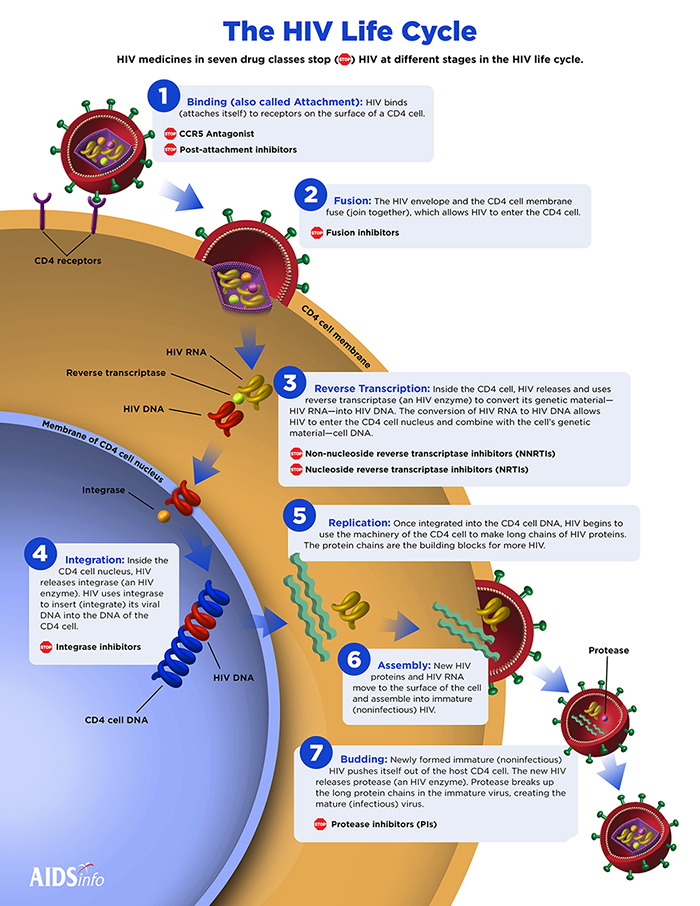Click here to view an explanation about HIV/AIDS.
HIV stands for Human Immunodeficiency Virus. Once infected, the individual will carry the virus for his/her entire life. HIV can cause AIDS (Acquired Immune Deficiency Syndrome) in the long term.
The virus enters immune cells where they multiply and destroy the immune cells. When the immune cell count gets too low, an immune deficiency develops and the body can no longer protects itself against other infections (opportunistic infections).
Therefore, an HIV-positive individual will find it difficult to ward off opportunistic infections and illnesses, which could lead to more serious diseases such as TB and even death.
CD4 cells are a group of white blood cells which usually protect the body against attacks from bacteria, viruses and other foreign organisms. These cells control the immune system.
HIV causes AIDS by attacking and destroying these white blood cells.
The virus multiplies within the CD4 cells. HIV also infects other types of cells in the body and multiply within cells, which therefore makes treatment extremely difficult.
The reality is that a person infected with HIV could look and be healthy for a long time and will not necessarily appear to be sick. HIV takes a long time to destroy the immune system completely and for systems to become visible.

Click here to view an explanation about how the HIV infection cycle works.